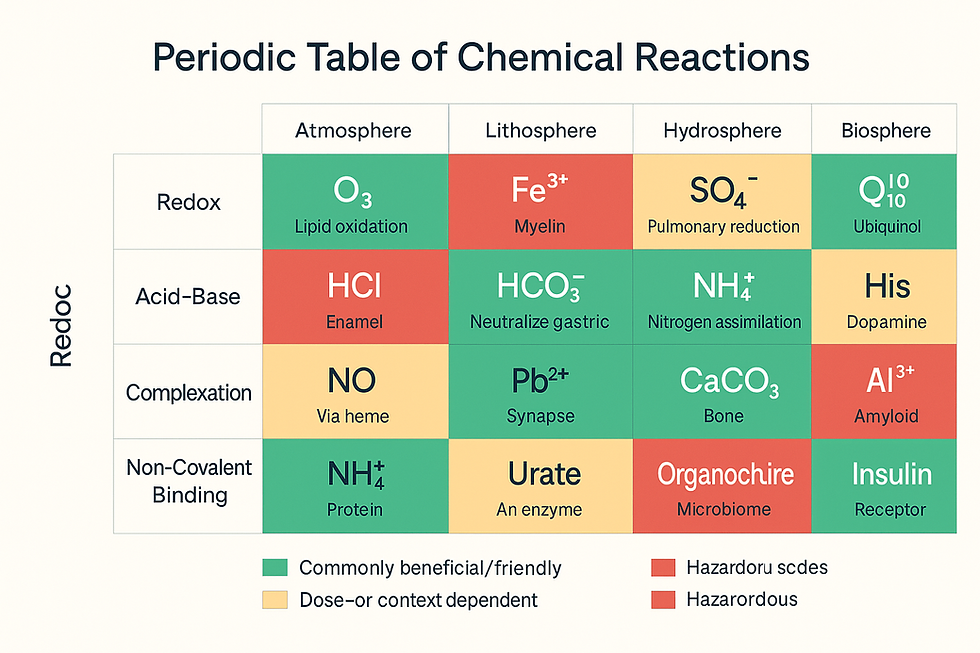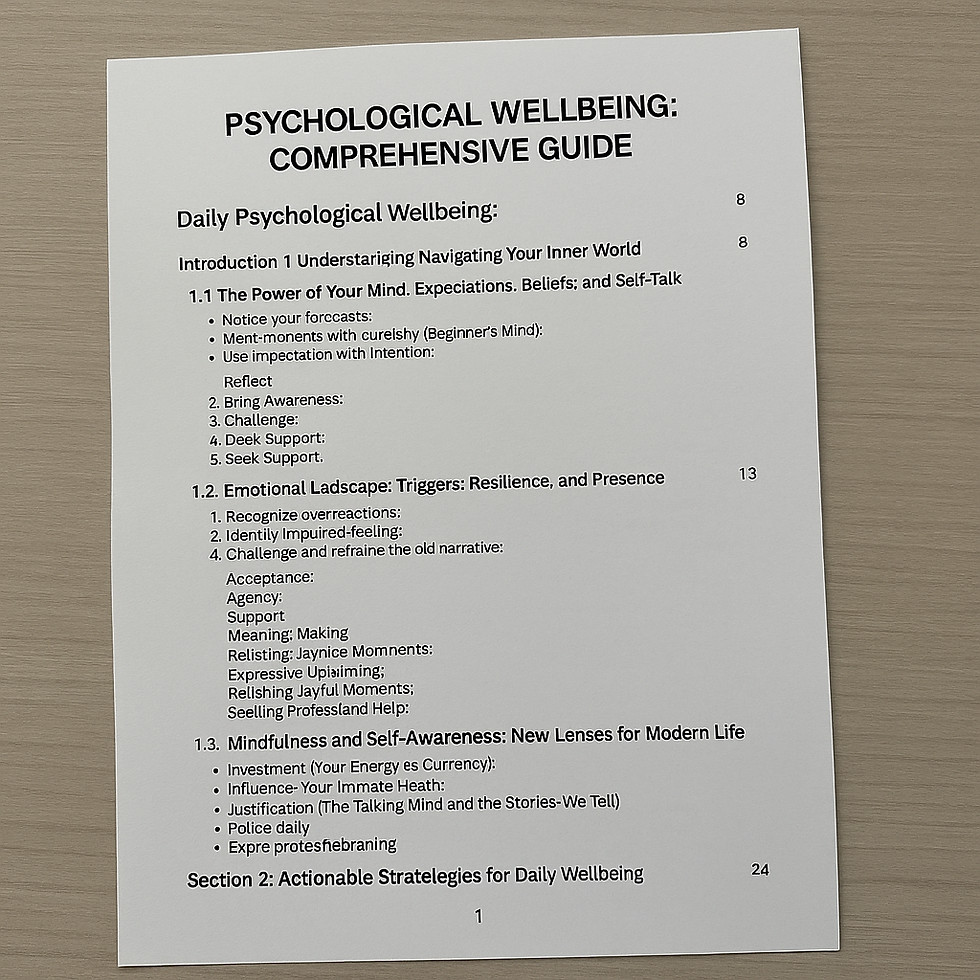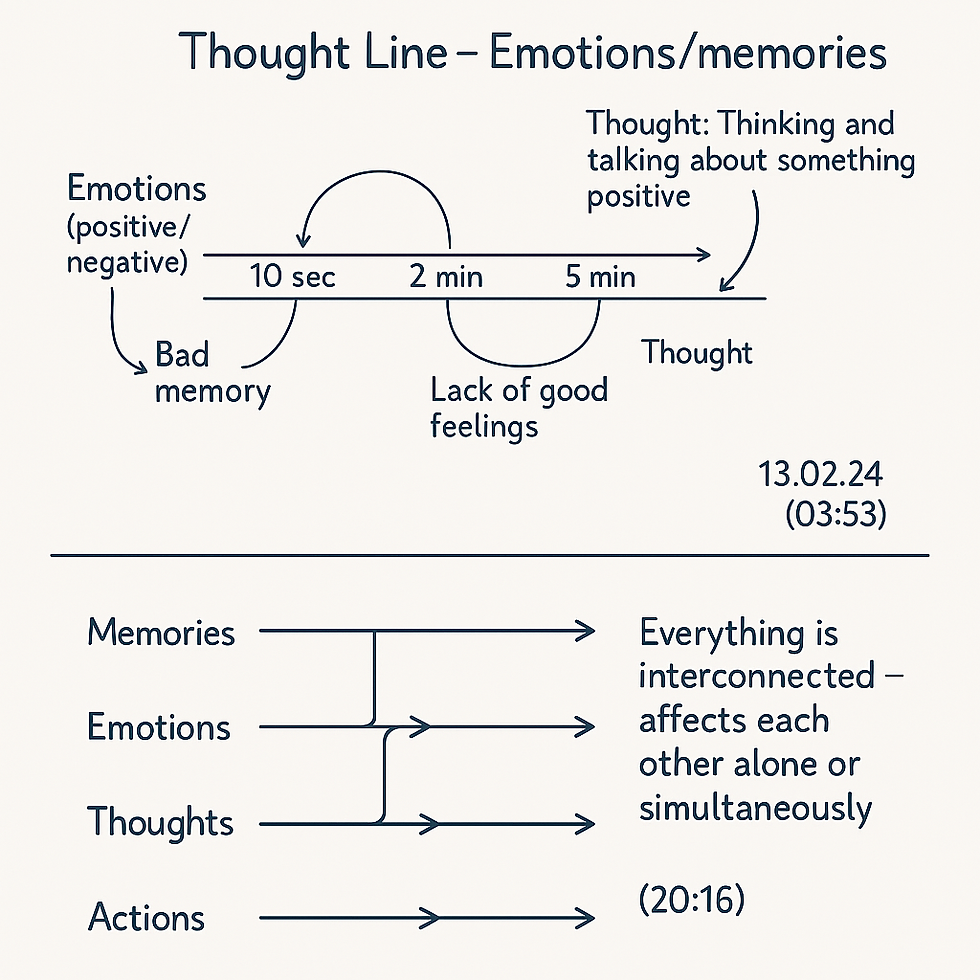Table of chemical reactions
- David B. N. J. & "A.I."
- Jul 1
- 3 min read

Please note that there may be errors, as this was constructed with LLMs, or what you call artificial intelligence.
This is meant to be guidance or inspiration in the fact that ideas spring up from nothing, which is creativity.
Listen to a podcast version of the papers here: (by notebookLM)
Download the papers here:
A summary:
– Vision and Conceptual Architecture
The project synthesises two complementary manuscripts—a deep-research report and a hypothetical white-paper—into a single proposition: build a living, versioned “periodic table” that classifies every reaction between Earth’s chemistry and human biology. Unlike a static database, the table is envisaged as a continuously updated knowledge graph that couples chemical identity, biological targets, experimental evidence and regulatory metadata into one queryable fabric.
At its conceptual core lie four universal reaction verbs—redox, acid–base, complexation and non-covalent binding—which cut across the planet’s four chemical domains (atmospheric, lithospheric, hydrospheric, biospheric). Each reaction is further resolved through five nested “zoom levels”, from ecosystems to single atoms, allowing users to trace a pollutant or therapeutic from environmental origin to molecular handshake with a protein.
To manage this multidimensionality, the authors propose a knowledge-graph schema with nodes for compounds, sources, protein targets, pathways, assays and diseases, linked by edges such as binds_to or participates_in. The schema is fuelled by foundational repositories—PubChem for structure, ChEMBL for bioactivity and DrugBank for mechanism—harmonised into a single source of truth.
– Engine of Discovery and Predictive Layer
The operational pipeline converts raw extracts into colour-coded verdicts:
Input – LC-MS/MS dereplication produces a composition matrix of candidate molecules.
Virtual screening – docking and graph-neural QSAR triage thousands of structures in silico.
Mechanistic modelling – GPU-accelerated molecular-dynamics movies refine binding certainty.
Wet-lab loop – robotised viability (CellTiter-Glo®), apoptosis (Caspase-Glo®) and electrophysiology assays turn predictions into ground truth.
Output – a multi-objective optimiser blends the five evidence streams into a −1…+1 Friendliness Index, rendered as a traffic-light interaction matrix (🟢 therapeutic, 🟠 context-dependent, 🔴 toxic).
Explainable-AI mandates accompany every score: SHAP bar-plots and layer-wise-relevance heat-maps travel with each row, satisfying emerging FDA and EMA expectations for model credibility. Continuous audits also measure biodiversity coverage against global disease burden, ensuring the library grows equitably.
Three flagship reference structures underpin data integrity:
Comprehensive Reaction-Descriptor Catalogue – identity, provenance, target, evidence and regulatory flags per compound.
Compound–Property–Reaction Table – minimal physicochemical and bio-activity columns with expandable slots for disease links and AI-generated analogues.
Maintenance & Versioning Layer – quarterly semantic-versioned snapshots for regulators plus nightly rolling builds for researchers, all guarded by crowd-sourced expert voting on friendliness labels.
– Applications, Governance and Future Horizons
Use-case demonstrations show the table in action:
Neuro-repair – lion’s-mane diterpenes (erinacines) progress from fungal fermentate to TrkA agonists, reversing sciatic-nerve conduction deficits and earning a 🟢 badge in the matrix.
Detoxification – phytochelatins and metallothioneins complex cadmium and mercury, while engineered microbiomes secrete indole metabolites that re-route xenobiotic metabolism, both scenarios traceable through the same reaction verbs.
Next-generation therapeutics – variational-autoencoder and GAN generators design BBB-positive analogues; a one-step carbon-addition retrosynthesis AI shortens lab turnaround from eight weeks to eleven days, slashing solvent use by 65 %.
Governance features include an immutable IPFS audit trail for every SHAP/LRP artefact, human-in-the-loop override mechanisms, GDPR-compliant data handling and regulator-ready dossiers aligned to FDA’s 2025 AI guidance.
Looking forward, the authors map a 2030 horizon where quantum-informed energetics tighten binding-energy predictions and light-powered green synthesis halves process-mass-intensity, pushing even amber molecules toward sustainable green zones.
In sum, the project reframes a “table” as a self-evolving compass—anchored in rigorous data standards, propelled by AI, safeguarded by ethics and regulation—that can turn the planet’s chemical diversity into precision therapies while illuminating hazards before they strike.





Comments